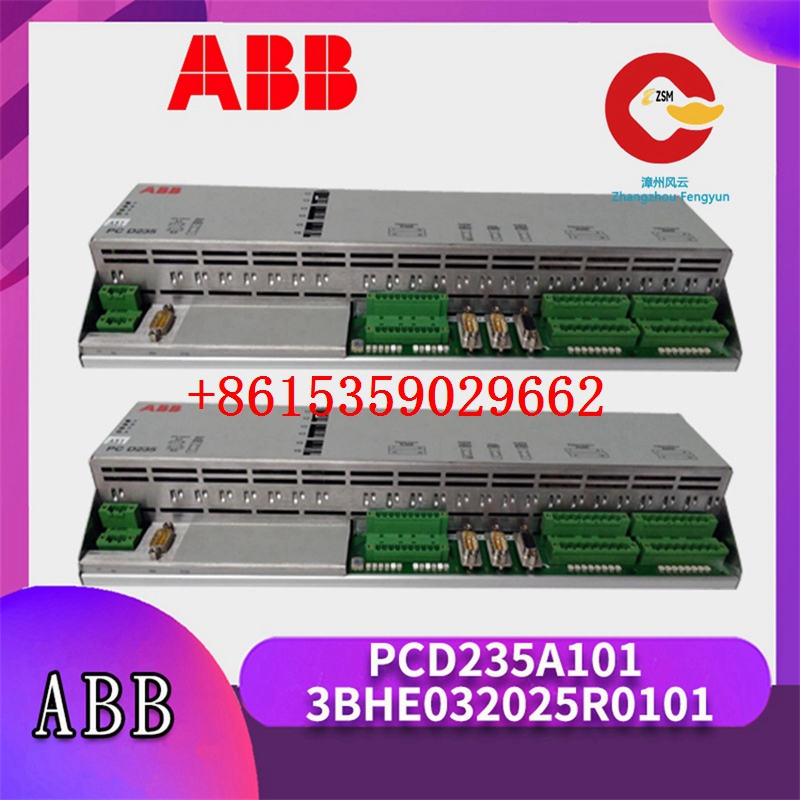Technical Parameters of ABB HIEE300900R0001 PP C322 BE Processor Unit

1. General Overview
The ABB HIEE300900R0001 PP C322 BE Processor Unit is a critical component designed for use in ABB’s advanced industrial control and automation systems. It serves as the brain of the system, handling complex computational tasks, data processing, and real-time control operations to ensure efficient and reliable operation of industrial processes.
2. Processor Specifications
- Processor Type: Equipped with a high – performance, industry – standard processor architecture optimized for real – time control applications. The specific processor model offers a balance between computational power and energy efficiency, enabling it to process large amounts of data quickly and accurately.
- Clock Speed: Operates at a clock speed that ensures rapid execution of instructions. This high – speed operation allows for fast response times to changing process conditions, which is crucial in industrial environments where timely control actions are essential.
- Number of Cores: Features multiple processing cores, enabling parallel processing of tasks. This parallel processing capability significantly enhances the overall performance of the processor unit, allowing it to handle multiple control algorithms and data analysis tasks simultaneously.
3. Memory
- RAM (Random Access Memory):
- Capacity: Comes with a generous amount of RAM to store program code, temporary data, and intermediate results during the execution of control algorithms. The large RAM capacity ensures smooth operation even when dealing with complex control strategies and large data sets.
- Type: Utilizes high – speed, low – latency RAM modules to minimize data access times and improve system responsiveness.
- ROM (Read – Only Memory):
- Capacity: Contains a sufficient amount of ROM to store the firmware and basic system configuration data. The firmware provides the fundamental operating instructions for the processor unit and is essential for its proper initialization and operation.
- Non – Volatility: The ROM is non – volatile, meaning it retains its data even when the power is turned off, ensuring that the processor unit can start up correctly and resume its previous state after a power interruption.
4. Communication Interfaces
- Ethernet Interface:
- Speed: Supports high – speed Ethernet communication, with a data transfer rate that allows for seamless integration with other devices in the industrial network. This enables fast data exchange between the processor unit and other control components, human – machine interfaces (HMIs), and supervisory control and data acquisition (SCADA) systems.
- Protocols: Compliant with standard Ethernet protocols such as TCP/IP, UDP, and Modbus TCP, ensuring compatibility with a wide range of industrial networking equipment and software applications.
- Serial Communication Interfaces:
- Types: Includes multiple serial communication ports, such as RS – 232 and RS – 485, for connecting to legacy devices and sensors. These serial interfaces provide a reliable and cost – effective means of communication in industrial environments where wired connections are still prevalent.
- Baud Rate: Supports a range of baud rates to accommodate different device requirements and communication distances.
5. Input/Output (I/O) Capabilities
- Digital I/O:
- Number of Channels: Provides a set number of digital input and output channels for connecting to digital sensors, switches, and actuators. The digital I/O channels allow the processor unit to monitor the state of binary devices and control the operation of other digital components in the industrial process.
- Voltage Levels: Supports standard voltage levels for digital signals, ensuring compatibility with a wide variety of industrial devices.
- Analog I/O:
- Number of Channels: Includes a certain number of analog input and output channels for connecting to analog sensors, such as temperature, pressure, and flow sensors, as well as analog actuators. The analog I/O channels enable the processor unit to measure and control continuous variables in the industrial process with high precision.
- Resolution: Offers high – resolution analog – to – digital (A/D) and digital – to – analog (D/A) conversion, ensuring accurate representation and control of analog signals.
6. Power Supply
- Input Voltage Range: Designed to operate within a wide input voltage range, making it suitable for use in different industrial power environments. This flexibility reduces the need for additional power conditioning equipment and simplifies system installation.
- Power Consumption: Has a relatively low power consumption, which helps to reduce operating costs and minimize heat generation within the control cabinet.
7. Environmental Specifications
- Operating Temperature Range: Can operate reliably within a specified temperature range, ensuring stable performance even in harsh industrial environments with varying ambient temperatures.
- Humidity Tolerance: Withstands a certain level of humidity, protecting the internal components from moisture – related damage and ensuring long – term reliability.
- Vibration and Shock Resistance: Built to withstand typical levels of vibration and shock encountered in industrial settings, such as those caused by nearby machinery or transportation during installation and maintenance.
8. Mechanical Dimensions
- Form Factor: Features a compact and rugged form factor, suitable for installation in standard industrial control cabinets. The mechanical design ensures easy mounting and integration with other control components.
- Weight: Has a relatively light weight, which simplifies handling and installation processes.
In summary, the ABB HIEE300900R0001 PP C322 BE Processor Unit is a high – performance, reliable, and versatile component that plays a vital role in ABB’s industrial control and automation systems. Its advanced technical specifications make it well – suited for a wide range of industrial applications, from simple control tasks to complex, large – scale automation projects.


